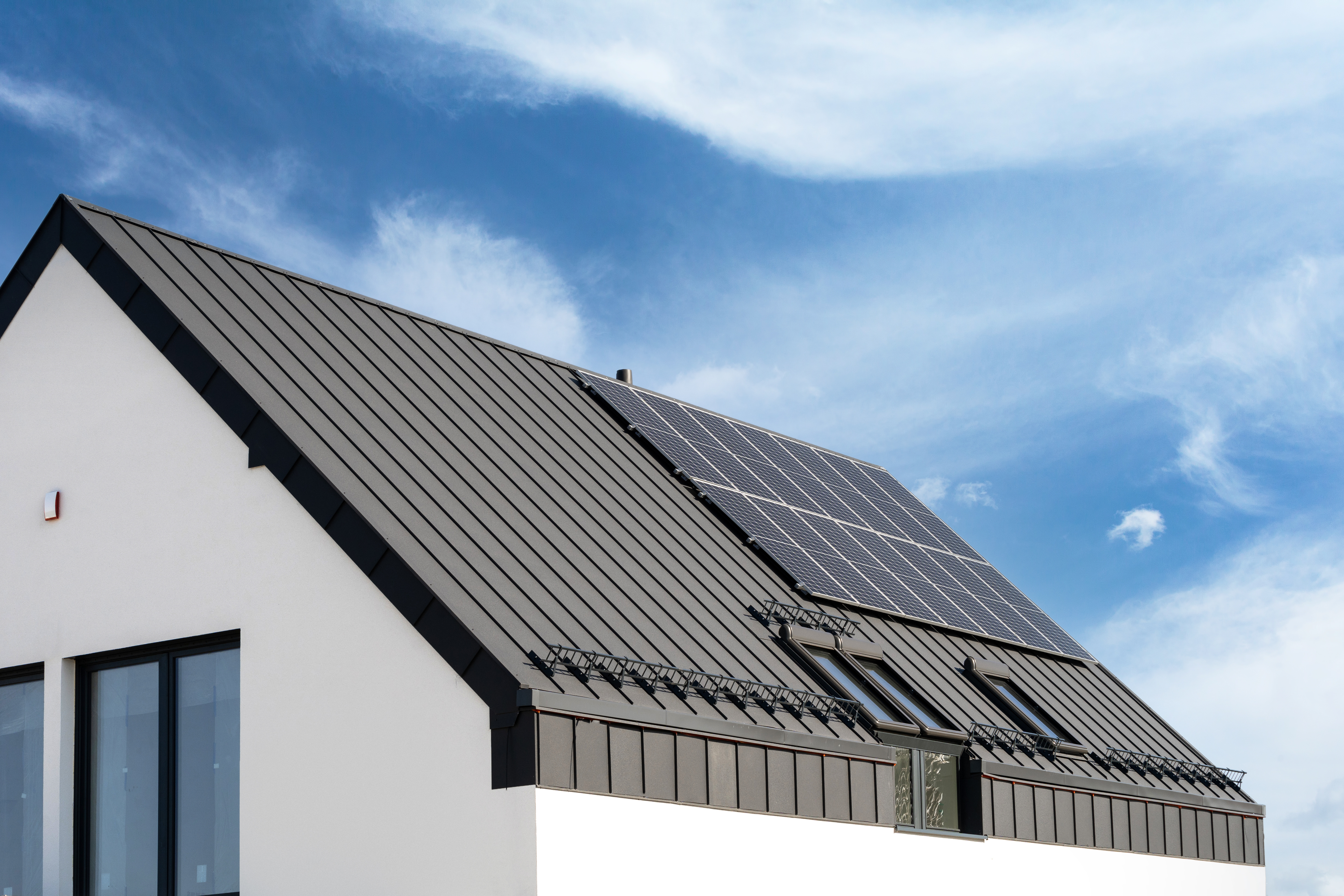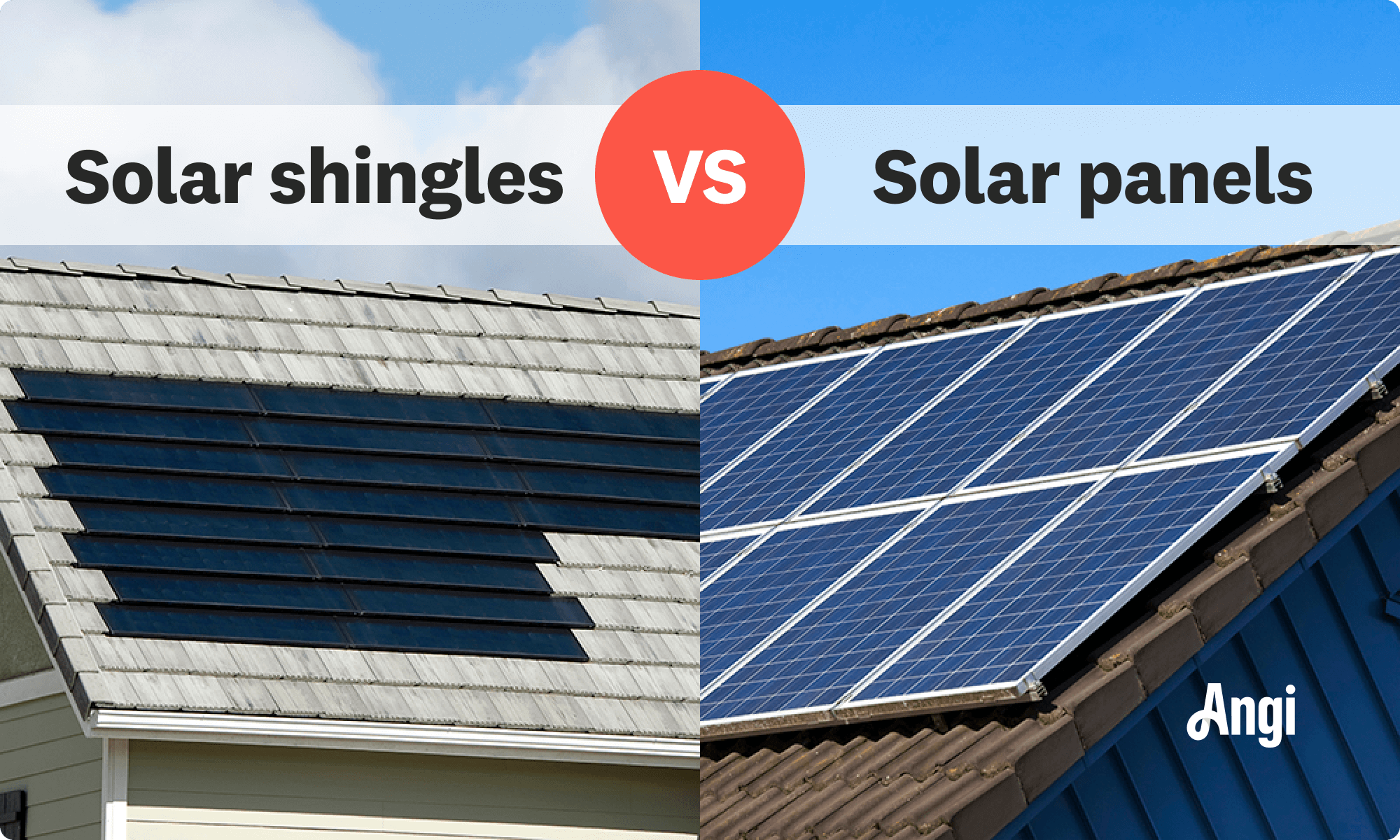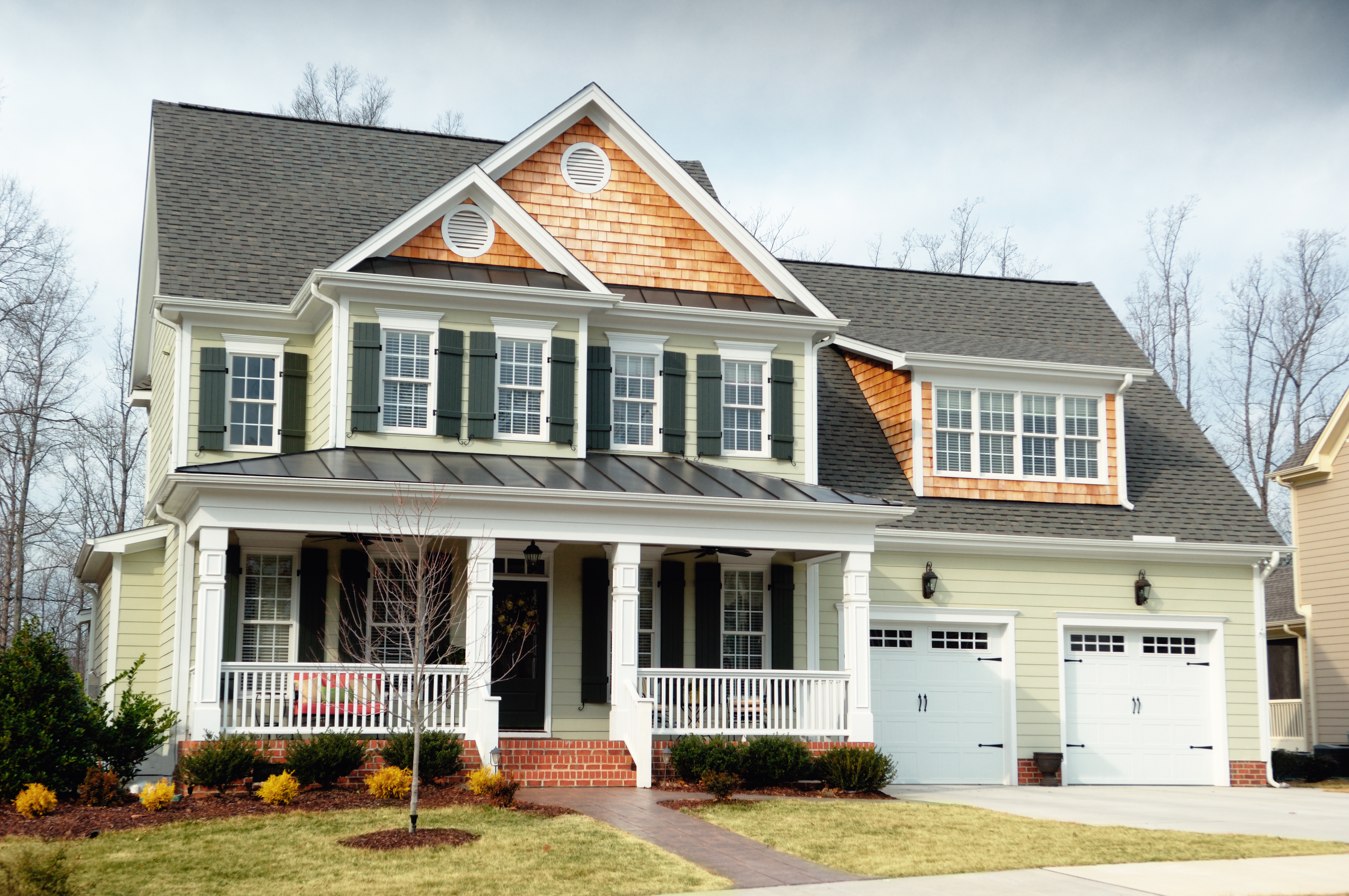
A metal roof can defend your home against Ohio’s varying weather conditions. Learn how much a metal roof costs in Columbus, OH.
Solar shingles cost an average of $35,000, and most homeowners pay somewhere between $21,000 and $50,000 based on roof size, electricity demands, and more.


Roof size, or the portion of the roof covered with solar shingles, is the most significant cost factor.
Many homeowners integrate small sections of solar shingles into their existing roofing to save on costs while still reaping energy-saving benefits.
Solar shingles from premium brands can cost more than twice as much as those from more affordable brands.
Higher-efficiency shingles cost more, but also save more on electricity.
Solar shingles weigh more than traditional shingles, so you may need to reinforce your roof, which can cost between $1,000 and $10,000.
Solar shingles cost an average of $35,000, and prices typically fall between $21,000 and $50,000. This breaks down to between $21 and $25 per square foot, or $2,100 to $2,500 per roofing square for solar shingles. Your price could climb as high as $75,000 if you cover your entire roof in solar shingles instead of installing small sections.
The size of your roof or the area of your roof you plan to cover with solar shingles is the most significant cost factor to consider. Some homeowners choose to integrate small sections of solar shingles into other roofing materials, while others cover their entire roof for maximum savings on electric bills. Solar shingles cost between $21 and $25 per square foot of coverage, so you can use these averages to get an accurate estimate for your project.
| Square Footage Covered | Solar Shingle Cost |
|---|---|
| 200 | $4,200–$5,000 |
| 400 | $8,400–$10,000 |
| 600 | $12,600–$15,000 |
| 800 | $16,800–$20,000 |
| 1,000 | $21,000–$25,000 |
| 2,000 | $42,000–$50,000 |
| 3,000 | $63,000–$75,000 |
You can expect around 60% of your total project cost to go toward the labor to install your solar shingles or an average of about $21,000. Your roofer may charge by the coverage area foot for labor, totaling between $13 and $15 per square foot or between $1,300 and $1,500 per roofing square, which covers 100 square feet.
Labor costs can increase from there if you have a steep roof, which requires additional safety equipment and time to complete the installation safely.
Many municipalities require a licensed electrician to connect your solar shingles to your home so that you can use the power they generate. Electricians cost between $50 and $130 per hour, and the standard solar shingle connection will take around two hours for a total of between $100 and $260.
Solar shingle costs can vary by location, sometimes by thousands of dollars. Professionals usually charge more in areas with a higher cost of living, so a solar roof will cost more in major cities and suburban areas than in rural areas. Prices can also fluctuate based on the average cost of living by state.
| State | Solar Shingles Cost |
|---|---|
| California | $50,800 |
| Florida | $36,100 |
| Georgia | $32,000 |
| Illinois | $32,700 |
| Michigan | $32,100 |
| New York | $43,100 |
| North Carolina | $34,500 |
| Ohio | $32,900 |
| Pennsylvania | $33,500 |
| Texas | $32,300 |
There are some other important cost factors to consider in order to get an accurate estimate for your solar roof project.
It’s a good idea to size your solar shingle system based on your home’s energy demands, with higher monthly electricity consumption requiring more square feet of solar shingles to offset energy demands. If you intend to size your system to cover all of your energy needs during the day, take your monthly electric consumption into consideration.
The chart below can help you estimate the cost of solar shingles based on consumption, but keep in mind that these numbers can vary based on sunlight availability, sun intensity, shading on your property, and more. Hire a professional to get a customized estimate to maximize your savings potential.
| Monthly Energy Demands | Average Solar Shingles Cost |
|---|---|
| 500 kWh | $35,000 |
| 600 kWh | $40,000 |
| 700 kWh | $45,000 |
| 800 kWh | $50,000 |
| 900 kWh | $55,000 |
| 1,000 kWh | $60,000 |
You should consider the energy output of your solar shingles when sizing your installation. You can look for the efficiency rating on spec sheets, which averages between 12% and 15% for most solar shingles. Higher efficiency ratings will often cost more, but they’ll also produce more electricity, which can offer greater long-term savings on your electric bills.
The brand of solar shingles you choose will play a role, too, with premium brands like Tesla costing two to three times as much as more affordable options. For example, Tesla solar shingles can cost as much as $60 per square foot, whereas solar shingles from GAF or CertainTeed can sit as low as $21 per square foot.
A bundle of asphalt shingles weighs between 45 and 80 pounds, depending on the thickness and quality, and a bundle of solar shingles weighs between 400 and 450 pounds. The added weight on your roof may require a structural inspection and reinforcement to ensure your home can safely support the solar shingles.
If you do need structural reinforcement—especially if you’re covering your entire roof with solar shingles—you could pay anywhere between $1,000 and $10,000, depending on the size of your roof and the work you need done.
Most roofing contractors will charge between $1,000 and $5,000 to rip off and haul away old roofing material. You could do the work yourself, but you’ll still likely pay a few hundred dollars in dumping fees, not including rental costs for a dumpster or truck to move the old material.
Replacing a roof often requires a building permit, which will cost between $100 and $500, depending on your municipality. Installing solar shingles comes with the added cost of hiring a licensed electrician to connect your system to the grid, which will add $50 to $300 to your total in most cases.
Many roofing companies will include permit costs in their total, including the electrical permit cost if they’re installing solar shingles.

Installing solar shingles requires a local roofing expert with plenty of experience and connections with the right vendors, setting this project firmly outside of the do-it-yourself sphere.
When you’re considering a solar shingles project, here’s why you’ll need to start by hiring a professional:
Solar shingles aren’t available in a DIY kit. Instead, you’ll need to find contractors with connections to the proper suppliers who are certified to correctly install them.
Solar shingles can be more delicate than normal shingles, and require an experienced professional to properly install and connect them.
You will need a professional to safely and properly connect the solar shingles to a battery or other storage option, then connect that battery to your home systems, following the latest building and electrical codes.
Solar shingle professionals can provide necessary contracts and warranties for the solar operation, as well as start the permitting process.
Working on steep rooftops is a safety hazard and best left to the professionals.
You cannot DIY a solar shingle project, even if you’re confident in your roofing abilities. This installation must be carried about by specialized, certified roofing pros. But there are a few tasks you can do to prepare.
Arrange for an inspection early, not just for an estimate but to examine your roof’s condition for signs of damage or additional issues.
Before the pros arrive, make sure your roof and gutters are cleaned of debris. Arrange for a roof cleaning service, if necessary.
Research your home’s amp service and general electrical needs, as well as if you’ll need to charge an electric vehicle.
On a per-square-foot basis, you’ll pay about the same amount for solar shingle replacement as you would for repair, so replacement is the best option if some of the shingles sustain damage or aren’t performing as expected. However, since repairs often only involve replacing individual shingles or small sections, it will likely be more cost-effective to pay for a repair, provided the rest of your roof still has some useful life remaining.
Solar shingles are some of the most expensive roofing materials you can install on your home, with installations reaching as high as $75,000 in some cases. However, there are some things you can do to keep your project as affordable as possible.
Integrate into regular shingles if possible. Covering small sections of your roof with solar shingles and the rest with another material, like asphalt shingles, is a good way to keep your total roof replacement cost down. Solar shingles cost about five times as much as standard asphalt shingles, so integrate small areas into a standard roof to save.
Take advantage of incentives. Solar incentives are often available to help bring down the effective cost of installing solar shingles. The federal investment tax credit (ITC) alone can provide a credit that can offset up to 30% of the installation cost. Check the Database for State Incentives for Renewables and Efficiency (DSIRE) for local incentives, too.
Size your system appropriately. A solar shingle system that is sized properly for your home by a professional will maximize the long-term savings you’ll see on your electric bills. Those savings can offset some or all of your installation costs.
Hire a pro. Hiring a professional to install solar shingles will reduce the risk of property damage and fire, as well as keep your roof warranties intact, likely saving you money over time.
It always pays to shop around and get at least three quotes for your project. A solar installer can help estimate how many solar shingles or panels you’ll need for your roof.
Installing a solar shingle roof often increases your home value because buyers will take the long-term utility bill savings into account when determining what they’re willing to pay. However, the appearance of solar shingles is polarizing, so some buyers may not want a home with a solar roof, leading them to pay less. The actual ROI you’ll see depends on your location, how much of your electric bill you can offset, and the tastes of the buyers in your area.
Review solar shingle installation costs in your area and set a budget. Collect estimates from professional roofers certified to install solar shingles.
If you’re only planning a partial installation, arrange for an inspection to decide where solar shingles will work best.
Consult your pro about timelines and how long your home may be without power during the connection process.
Solar shingles usually include the installation of a home battery or similar power option. Discuss your home’s overall amp needs with your pro to estimate which power option will work best.
Keep your yard clean and free of objects when the project begins. If you have pets that use your yard, keep them away while installers are working.
Home is the most important place on earth, which is why Angi has helped more than 150 million homeowners transform their houses into homes they adore. To help homeowners with their next project, Angi provides readers with the most accurate cost data and upholds strict editorial standards. We extensively research project costs to develop the pricing data you see, so you can make the best decisions for you and your home. We rely on reputable sources, including the U.S. Bureau of Labor Statistics, academic journals, market studies, and interviews with industry experts—all to ensure our prices reflect real-world projects.
Want to help us improve our cost data? Send us a recent project quote to [email protected]. Quotes and personal information will not be shared publicly.
From average costs to expert advice, get all the answers you need to get your job done.

A metal roof can defend your home against Ohio’s varying weather conditions. Learn how much a metal roof costs in Columbus, OH.

Dealing with a visibly damaged roof or leak? Learn about roof repair costs in Columbus to see how much you’ll need to budget for a permanent solution.

Learn about roof replacement costs in Columbus and what factors are at play to budget accurately and make sure you’re getting a fair price.

There is a calculation for how many soffit vents you need, depending on your square footage. Discover where to install them and what happens to your attic air during winter.

Architectural shingles come in a variety of colors and styles and are a durable way for homeowners to recreate some of their favorite roofing looks.

You may wonder what fascia is on a house. Our guide explains what you need to know about this important part of your roof and what purpose it serves.